- Home
- Bill Bryson
Icons of England Page 5
Icons of England Read online
Page 5
This place has a history – it was once the site of Pulham Air Station, from where the first transatlantic crossing by air balloon took place – but its present is more important. Today Lonely Road offers the residents of the four villages nearby, of which I am one, the chance to enjoy a landscape uncluttered by pylons, masts, roads or railways. Its ordinary beauty is something we have taken for granted down the years.
Only when a local planning officer recently referred to the ‘unexceptional quality of the landscape’ did ordinariness become a problem. The planner was supporting an application for a wind-measuring mast. By the time this book is published, the fields surrounding Lonely Road may well be on the way to becoming definitively cluttered. Thanks to the determined efforts of a landowner and the opportunism of a developer, there is a plan to place three 130-metre wind turbines on the fields.
So our little community, like many others across Britain, finds itself caught up in the great national debate about the future of the planet. It is difficult to convey how unpleasant and, above all, how strange the experience has been. Those of us who agree that a shift to renewable energy is essential, but that global need does not justify the sacrifice of much-loved countryside, are regularly portrayed as villainous and selfish – we are the equivalent of drinkdrivers, one government minister has said. Landowners and developers whose only motive is financial are suddenly heroes of the environment. Politicians, speaking to a largely urban electorate, have discovered that wind turbines are an easy vote-winner, symbols of green concern which will be viewed by the vast majority only on TV screens or on holiday.
What chance has our little patch of ‘unexceptional’ landscape against the might of environmental correctness? To those who do not enjoy or understand the countryside – like most politicians, one suspects – the idea that a few fields and birds, a bit of woodland, can be set against a great global concern will seem bizarre. Yet, as they become increasingly rare, these unspoilt, ordinary places matter, each in its own particular way. The fields outside Dickleburgh, for example, offer an unusual variety of birdlife, access to nature and rural peace for hundreds of villagers. The great abstract ideals of environmentalism mean nothing when they are achieved against the grain of local environments.
It is difficult, walking down Lonely Road, not to be saddened by the concrete and steel nightmare which may well lie ahead. In years to come, when the ugly remains of greed and political panic litter the landscape – the true icons of early twenty-first-century Britain – future generations may wonder what on earth possessed their parents and grandparents to give up so easily what is so precious.
LOVE’S LABOURS WON
Raymond Blanc
on orchards
BEING A CHEF, IT’S easy for me to think of food when I consider the landscape of this, my adopted country. But I also think of something that flourishes in the gentle, moderate climate; something that leaves its mark for generations, but is also up to date and always in need of renewal; something we have to tend for future generations. I think of apples and orchards.
It seems I am not alone in my love of this fruit-filled landscape. In Julius Caesar, Shakespeare highlights the importance of orchards when he discusses the legacy a man can leave behind. When Mark Antony tells the people of Rome the contents of Caesar’s will (act III, scene II), he emphasizes the orchards Caesar ordered to be planted: ‘He hath left you all his walks/His private arbours, and newplanted orchards … he hath left them you/And to your heirs for ever; common pleasures/To walk abroad, and recreate yourselves.’ For Shakespeare, orchards were places to be admired and enjoyed – something I have tried to recreate in Great Milton.
In the grounds of Le Manoir – in the fold of hills that overlook the water meadows of the Thames Valley – we have the remains of an old orchard. It is only a small plot, and many of its wizened Bramley apple trees are too old to give their best. So we have let the ground under many of the trees revert to wild flowers and plants – snowdrops first, then crocuses, followed by a fragrant carpet of bluebells. It’s glorious in every season, from the first greening of the buds and the appearance of the lemony primroses, to the blossom and the humming of the thriving insect population in the dried grasses of late autumn.
This wonderful scene affords us our ‘common pleasures’. But we know that, to provide something practical for future generations to enjoy, we can’t just create a beautiful space. So as well as the tiny show orchard, we are now planting a twenty-acre apple and pear orchard. We are also adding something completely new but not out of character for the site – a lavender-bounded Provençal orchard with apricots and figs.
The fifty varieties of apple and pear we plan to use are yet to be decided. But I’m certain we’ll have some of the best older local varieties, especially the greatest Oxfordshire cultivar, the Blenheim orange. This large, solid, crisp green apple – with its blush of red and haunting perfume – is stunningly good either raw or cooked, but difficult to buy, even locally. The trees are magnificent in stature, which makes them unsuitable for modern systems of training. This means a mixture of systems will be used in our new orchard. Whatever we decide, we know that we will be enhancing the landscape – not just for us, but for our heirs for ever.
Apple- (and pear-) growing is one of the things England does best. And the simple act of choosing an English apple – over, say, a Chinese one grown in almost unthinkably large quantities – is a vote for biodiversity, as well as the preservation of our own traditional landscape. Old pearmain, recorded in the thirteenth century, is probably the only one of our contemporary English apples that Shakespeare would have recognized. But he’d agree that the names of the cultivars are themselves poetic. Ashmead’s kernel, Brownlees, Russet, Ellison’s orange, King of the pippins, Laxton’s fortune, Lord Lambourne, Pitmaston pineapple, and Ribston pippin are just some of the delectable choices on offer to help us give something back to our region and its countryside.
THOSE SPECIAL PLACES
Ronald Blythe
on privately claimed territories
WE WERE DRIVING ALONG the lane leading to the fields which we crossed to Vicarage Cottage, Grandmother’s house, when I suddenly noticed it, the hitching post. And after all these years. And painted white, with the iron ring which as a boy I never passed without lifting, and then letting it fall. We stopped and I did it once more. These rituals are not uncommon. Dr Johnson, the rational giant, had his normally erratic progress further impeded by not stepping on the line between flagstones. Eventually, such compulsions create a private landscape, one of deep experiences and revelation. A holiday long ago is whittled down to a single memory, such as lying on the thrift at Land’s End and being lulled into teenage fatalism by the marvellously dull regularity of the crashing waters below. Once I returned to sit again on the very spot. In Perthshire I accidentally witnessed an aged friend making her farewell to a deserted village on Rannoch Moor, going the rounds, touching the broken crofts as she had done as a schoolgirl, when the holidays were over. But now she was touching them for the last time, as she would not be able to manage the rough walk through the heather again.
I haven’t dared to paddle in the shallow stream which feeds the Stour, as this would be too much for the passersby. But it was where the tiny fish hurried between my white water-extended feet and the sand whirled between my toes. As most of us children splashed there, a good many old chaps and women may well have this summer ditch on their personal map. Not so the ancient, uncomfortable wall against which I was pressed to be kissed, and which I nod to en route to Waitrose.
Wildflower and wildfruit sites are extant here and there. Human beings are apt to have a weird kind of vanity about certain species blushing unseen by them, and I would experience guilt if I suddenly remembered the white violets, only to find them over. People would tell each other, ‘The white violets are out!’ and I would go at once to ‘my’ patch. It was near the frogspawn pond, a place I had long annexed. Not long ago, a neighbour said, ‘You must co
me and see our pond,’ and I was almost driven to state my earlier claim. The poet John Clare laid claim to everything which grew, flew or simply was in his native village, making bird lists and flower inventories, as well as recording all the neighbours’ shouts and songs, although privatizing them at the same time, and making them sacred to him. These folk and plants, these footpaths and roads, may have been redistributed by an Enclosure Act, but history has proved that no countryside can be seen in the general sense after it has been through the private lens of a great local writer.
But the majority of us do not list our private acres, our plane tree in St James’s Park, our little consoling geographies which have been brought about by love or maybe by just sheltering from the rain. Smells come into mine. The promising odour when I open the door of an old church which is the same concoction as that I knew when I was prying around Perp and Dec* in my twenties, and persists in spite of decades of the latest cleansers and flower arrangements. A whiff of something which is doctrinal as much as bats and books. I breathe it in thankfully, the irremediable dust which is mine alone and part of my most intimate history, be it released in a nave in Cornwall or Powys. How did this strong scent of ages get out of my native Suffolk? But what a comfort that it did. For I can have it anywhere I go. Even in France.
I have never made a pilgrimage to any of my privately claimed territories, for this is what these cliffs, woods, churchyards, fields, occasional London streets, wildflower sites, ditches, rivers and lonely beaches are, places which hold the kind of information which is difficult enough for me to find, let alone a biographer. I have been a notorious loller in the sun, listener in the wind, watcher of small events, determined wanderer around, and adventurer in my way. Now and then I turn up where I practised, like Samuel Johnson, absurd rituals, or where sea sound overwhelmed me (Hoy), or mostly where I daydreamed. Did my parked bike leave its mark on a rock? One of the earliest things I can recall is leaving a lead soldier under a fat flint in a cobbled yard. Why? To preserve him? To lose him? ‘What a strange boy,’ they would have said, had I told them. But it is not until this moment that it has occurred to me, via the hitching post, that I have spread myself widely and secretly, as have most of us. Worse – or better – I have been fetishistic, curious and enquiring. And much alone in the open air.
MY LITTLE PIECE OF HISTORY
Rosie Boycott
on fossils
MARY ANNING’S FOSSIL SHOP lies halfway down Broad Street in Lyme Regis. If you’re looking downhill towards the sea, the shop is on the right, at a point on the street where the pavement is raised above the level of the road and a shiny black railing stops you from accidentally falling on to the cars below. For most people, Lyme’s claim to fame is as the location for John Fowles’ The French Lieutenant’s Woman. Walk down to the fingershaped pier – known locally as the Cobb – and on any day of the year there’ll be someone looking out to sea, the wind blowing the hair off their face, mimicking Meryl Streep as she appeared in the closing frames of the film. But the town’s most honoured individual should rightfully be Mary Anning. She didn’t sign any declarations or fight any battles, but down along the cliffs which converge on Lyme Regis she made a discovery that changed her world – and ours.
Mary Anning’s life would make a rather spectacular movie. When she was a fifteen-month-old baby, it is reported that a lightning bolt struck her and the three older girls taking care of her. Only Mary survived. Her father was a cabinetmaker who liked to take his young daughter on trips to look at the ‘curiosities’ embedded in the local cliffs. He died when Mary was eleven, leaving the family destitute. So Mary started selling the fossils to Victorian visitors, who came to Lyme to enjoy its bracing air and dramatic scenery. In 1811 she found what looked like a four-foot alligator skull in the cliffs. With her brother’s help she gently removed it from its 150-million-year-old tomb. A storm did the rest, revealing the full skeleton of the first ichthyosaurus the world had ever seen.
Today Mary’s shop is packed full of fossils from all over the world. Whenever I go there I buy another local, polished ammonite – a thin slice of wonder that fits neatly into the pocket of my jeans. A small gold label attached to the boxes in which the fossils sit tells me they have been found on the Jurassic Coast and are 170 million years old. They cost just £2.50. And it’s this that I really can’t get over. For £2.50 I can buy, say, nine cigarettes or the polished remains of a cephalopod mollusc (a relative of the squid and octopus family), which lived round Lyme Regis an unimaginably long time ago. Ammonites were free-swimming creatures that used the chambers in their shells as ballast tanks to control their buoyancy. They disappeared about sixty million years ago – around the time the dinosaurs became extinct.
I like giving ammonites away to people, and I like to keep one in my bag or in my pocket. I take it out sometimes and just stare at its lovely spiral pattern, a pattern that has never been bettered in millions of years. Like the patterns of a seashell, or the arrangement of leaves on a sunflower, my ammonites conform to the Fibonacci number system. This simple system (1 + 1 = 2, 2 + 1 = 3 and so on) results in the Golden Number, or the Golden Ratio, which caused such a deep philosophical crisis among mathematicians of the fifth century BC as they first grappled with concepts of infinity. The numbers, which order the natural world I see around me, also ordered the world in which my ammonite was alive and swimming. It is powerful evidence of the connection between all things – powerful evidence too of just how fragile and fleeting it all is.
Around ninety-nine per cent of all the species that ever lived are now extinct and only a very small fraction are preserved as fossils; an even smaller fraction are ever actually found. And at Mary Anning’s shop, you can get all this for just £2.50.
THE FINAL FRONTIER
Derry Brabbs
on Hadrian’s Wall
MY FIRST ENCOUNTER WITH Hadrian’s Wall was in 1984, while doing the photography for Wainwright on the Pennine Way – the second of seven books I illustrated for the legendary Alfred Wainwright. I was already aware of the wall’s existence but my vision of it, like so many others, was shaped solely by viewing other people’s published images. I had little idea of just how awesome the three-dimensional version would be.
It was a spine-tingling and somewhat humbling experience to stand alone on one of the wall’s highest vantage points, touching blocks of stone that were originally slotted into place by soldiers from the Roman legions of York, Chester or Caerleon. The wall, which was started in AD 122 upon the orders of Emperor Hadrian, cleverly utilized the island’s narrowest part, extending for some seventy-three miles across the Tyne-Solway isthmus between Carlisle and Newcastle. Nowadays, we take so much for granted and rely on technology for even the most basic tasks. It is easy to forget just how much of our built heritage was accomplished solely through manual labour – including arguably the most important extant monument from the Roman Empire.
Sadly, prolonged stretches at either end of the wall have completely disappeared. In fact, the solid walls of many local churches, farms and manor houses reveal just how much of it was used as a free source of ready-dressed building stone. But there is still much to excite a landscape photographer. The wall can be seen at its spectacular best along the central section between Walltown Crags and Housesteads Fort, where it dips and soars for several miles over the undulations of the Whin Sill ridge. Antisocial early mornings and late nights await those anxious to capitalize on the warm tones and low-angled light of sunrise and sunset – natural attributes that are particularly essential when attempting to highlight the character, contours and definition of the wall.
I have now lost count of the times I have made the twohour journey up to the wall in pitch blackness – spurred on by the forecast of a brilliant sunrise – only to have those expectations dashed by banks of low cloud or mist. The thought that I might have this slice of history to myself for just a few moments, however, makes it a chance worth taking. For in daylight hours, the only battles this
great wall now sees are the ones generated by the increasing amount of pedestrian traffic – especially since the Hadrian’s Wall Path National Trail was formally opened in 2003.
Few of those who now tramp along its more clearly defined sections will ever know that it is because of John Clayton (1792-1890) that they can still do so. Clayton is justifiably lauded as being the saviour of Hadrian’s Wall. He was appalled at the way in which landowners showed scant regard for the wall’s historical value by persistently plundering its stone. In the absence of any conservation or protection bodies – the concept of ‘heritage’ was restricted to an enlightened minority at that time – he began buying farms and other properties whenever they came up for sale. His labourers were then tasked with the job of clearing and rebuilding long sections of the wall on his newly acquired property. It is only because of this wonderfully altruistic act that this historical masterpiece is there for photographers and tourists alike to enjoy. Without John Clayton, Hadrian’s Wall would be nothing more than a good story and a few shards of pottery lying buried under the earth.

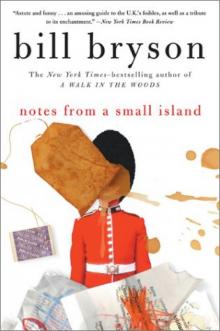 Notes from a Small Island
Notes from a Small Island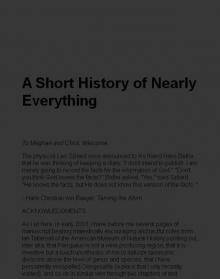 A Short History of Nearly Everything
A Short History of Nearly Everything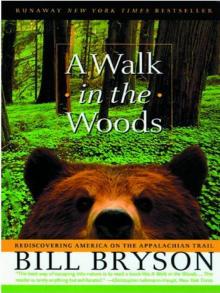 A Walk in the Woods
A Walk in the Woods I'm a Stranger Here Myself
I'm a Stranger Here Myself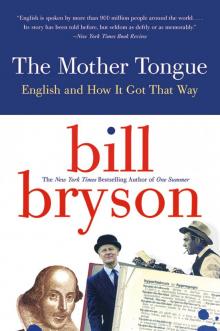 The Mother Tongue
The Mother Tongue Shakespeare
Shakespeare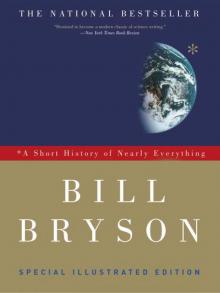 A Short History of Nearly Everything: Special Illustrated Edition
A Short History of Nearly Everything: Special Illustrated Edition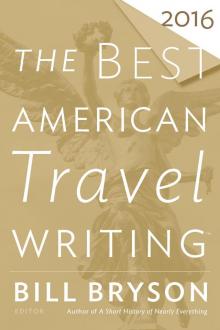 The Best American Travel Writing 2016
The Best American Travel Writing 2016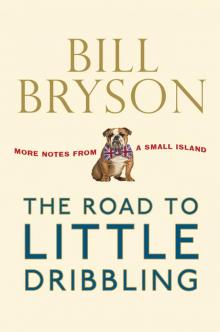 The Road to Little Dribbling
The Road to Little Dribbling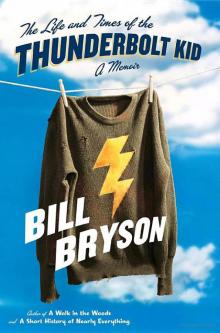 The Life And Times Of The Thunderbolt Kid: A Memoir (v5.0)
The Life And Times Of The Thunderbolt Kid: A Memoir (v5.0) Made In America
Made In America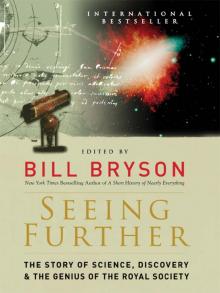 Seeing Further
Seeing Further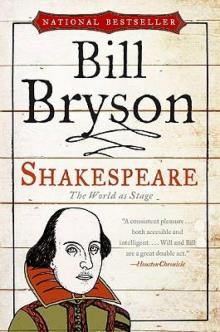 Shakespeare: The World as Stage
Shakespeare: The World as Stage The Life and Times of the Thunderbolt Kid
The Life and Times of the Thunderbolt Kid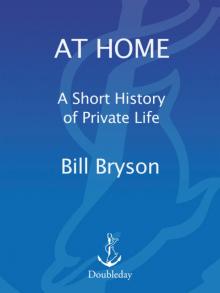 At Home
At Home Bryson's Dictionary For Writers And Editors (v5.0)
Bryson's Dictionary For Writers And Editors (v5.0) Neither Here Nor There
Neither Here Nor There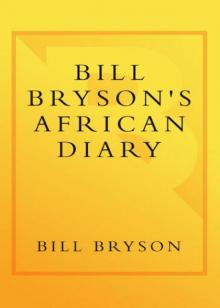 Bill Bryson's African Diary
Bill Bryson's African Diary